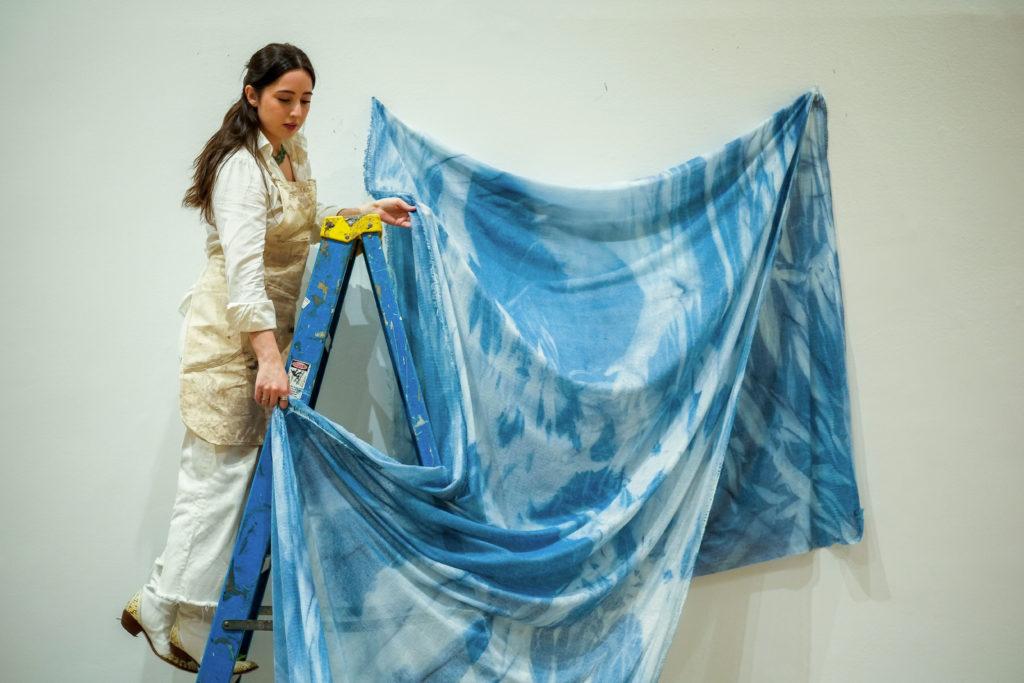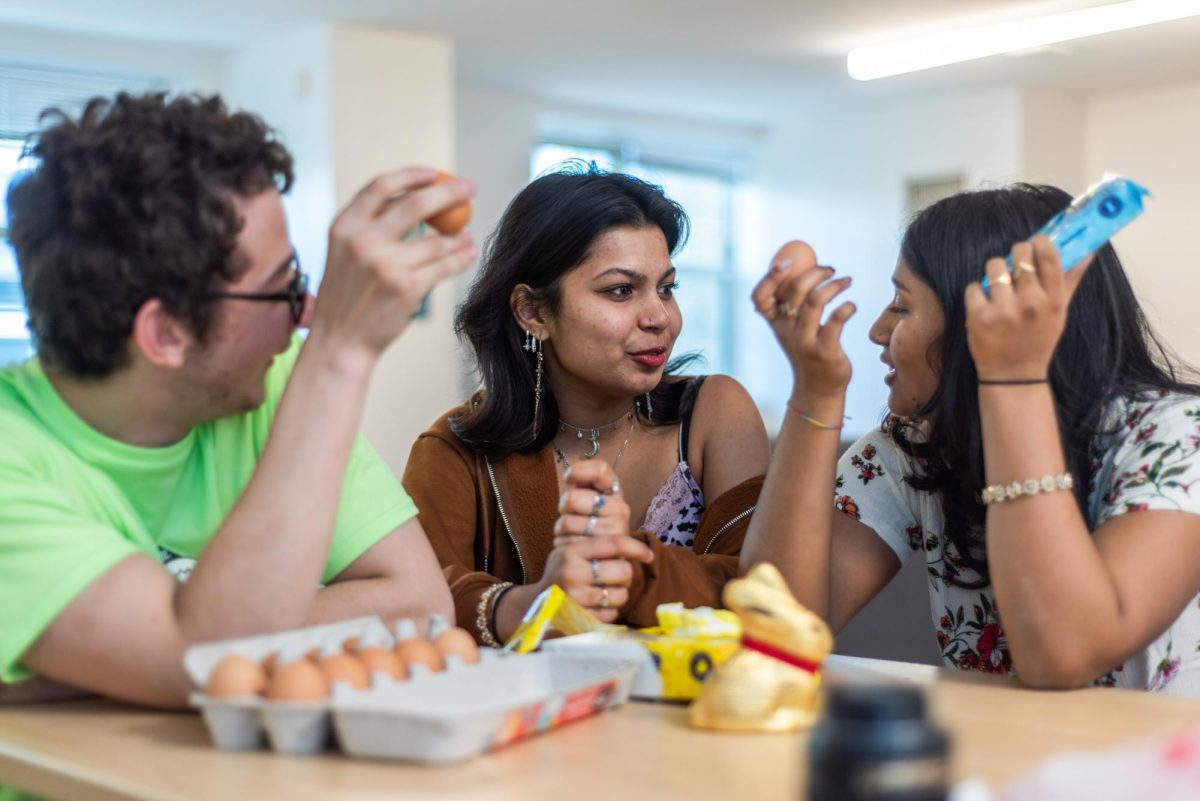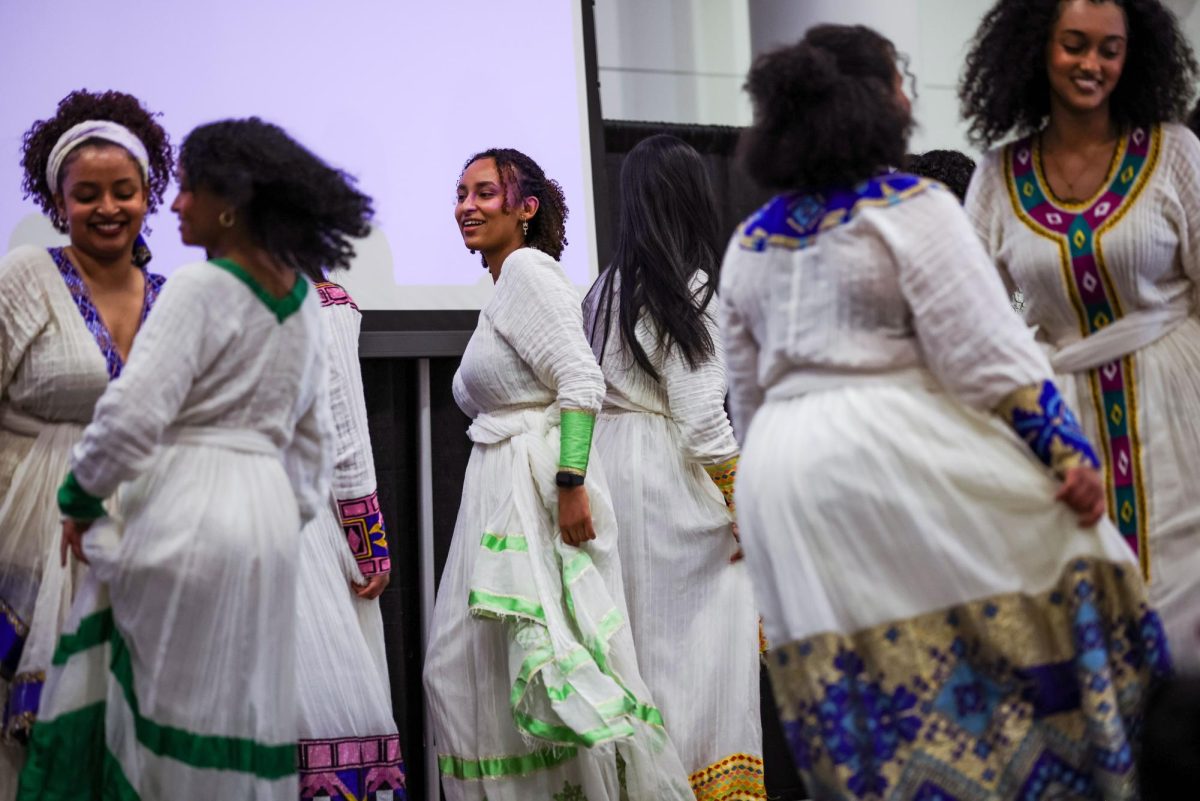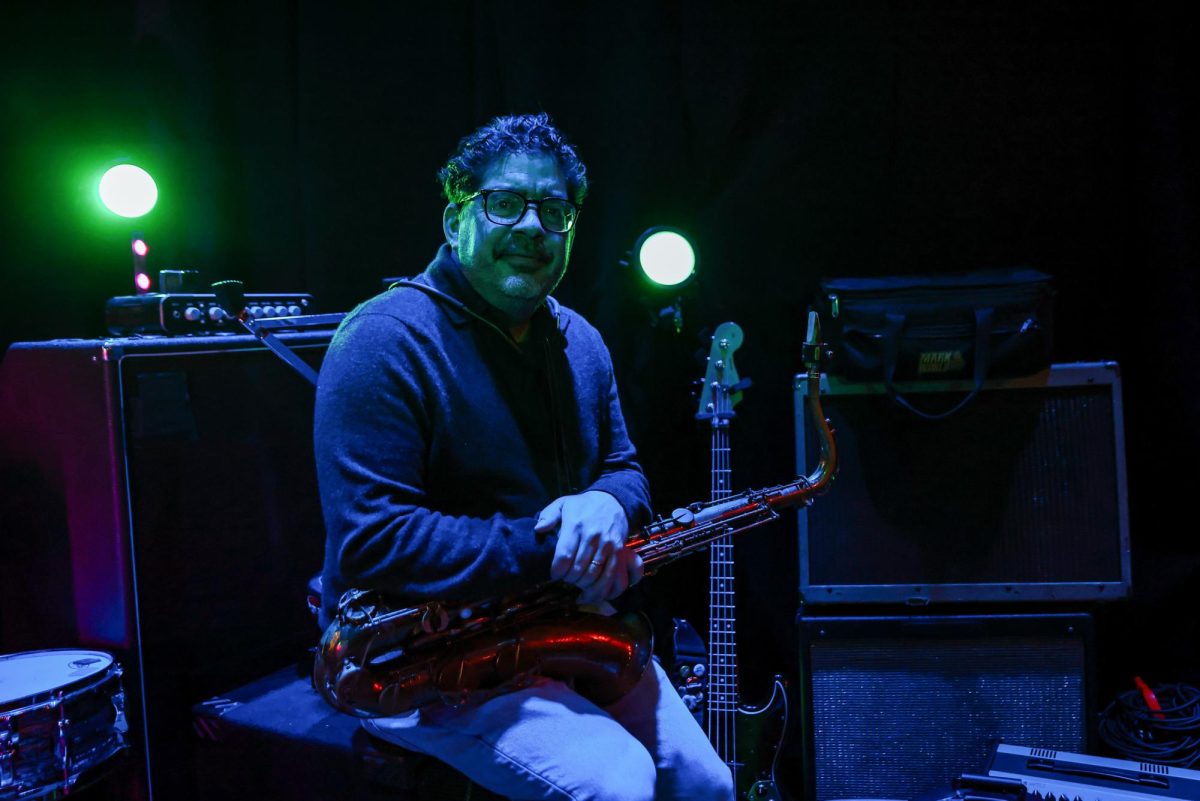Fine arts senior Alyx Williams wants to redefine the tools she uses to make artistic statements.
As she prepares to present her senior thesis project for the Corcoran School of the Arts and Design, Williams breaks away from using artistic utensils as a mere means to craft her work. Instead, she listens to how her body “interacts” with her materials to create art, forming a relationship between her tools and herself.
In NEXT, the Corcoran’s annual showcase for senior thesis projects, Williams will unveil two projects, including a 30-foot-long stretch of fabric capturing silhouettes of her body in various poses entitled “See” and a six-foot-tall clay sculpture, “Doodle,” which depicts scribbles she draws to relieve stress. As she worked in “physical conversation” with her materials – watching and listening to the art while crafting the pieces – Williams explores themes of body dysmorphia, emotion and release through her two installations which will go on display in the Flagg Building Thursday.
“I want to form a bond and relationship with the materials that I’m using,” Williams said. “Almost like they’re their own entity that I’m just kind of working with and introducing myself to most of the time.”
Williams said her experience growing up in Manhattan and Brooklyn strained her relationship with her body because the urban environment pressured her to act and look older than she was for safety purposes, being “hyperaware” of how people perceive her walking along the street. But since coming to GW, she said she’s incorporated herself into her artwork to reconcile her relationship with her body and encouraged a “profound” connection with herself. She said she crafted a cake of her face this past fall to explore “challenging” materials and created a print with her body, illustrating the “distorted” view she has of it.
For her senior thesis, Williams’ physical being will take center stage.
She said she explored cyanotypes, a photographing printing process, in the Smith Hall of Art last month to create silhouette imagery of her body on a 30-foot-long piece of stiff fabric for “See,” the first portion of her thesis. Williams said she spread the fabric over cement and laid on top in various positions. She said after holding her positions for an uncomfortable 10 to 20 minutes, the UV light from the sun created silhouettes, illustrating the struggles of body dysmorphia manifesting themselves.
“A lot of it talks about body dysmorphia with the images of my body, not feeling comfortable in who you are,” she said. “And I want to exemplify and create a space where people understand that they’re not alone in those feelings.”
She will hang this cyanotype fabric a few feet above onlookers’ heads in the Flagg Building – between floor and ceiling – pushing viewers to recognize their pain and their own bodies as they strain their necks to see the installation. She said people can go about their days unaware of their own bodies, sometimes unable to perceive the physical presence of themselves or others.
“I’m forcing my audience to be physically aware of themselves,” Williams said. “The process has been an exploration of materials but also an exploration of my own bodily awareness and corporal reality.”
As an art history minor, Williams said she takes inspiration from French artist Yves Klein who splashed his conceptual work with bold color in the 1960s, like a painting of a series of women with blue bodies. She said Ana Mendieta, a multidisciplinary artist who depicted emotion and anger through body-centric art also serves as an inspiration for Williams to emotionally charge her art, like she does in her second thesis piece, “Doodle.”
In “Doodle,” Williams weaved a single thin line of clay that repeatedly intersects and intertwines with itself to resemble the scribbles she draws to relieve herself of emotion and “prying” ideas. She said she wanted to bring her doodles into the 3D world so her audience could explore a similar sense of the peace and escapism she finds in her doodles.
[gwh_image id=”1187181″ credit=”Photo Credit: Joey Enriquez” size=”post-thumbnail” align=”center” /]
“I want for people to find themselves getting lost in the lines, to see where their eye goes and notice what path they make for themselves,” Williams said.
Williams said she wants to form a relationship in her work with her artistic materials like clay, fabrics and charcoal, working collaboratively with them rather than manipulating them on her own. As she crafted “Doodle,” she said she allowed the clay to lead her while she worked with the material, noting where it bent to keep it from tearing or breaking. She said doodles and clay offer her a medium to release her emotions about sources of stress – she can press her finger into clay, and it will take on that impact.
“I love the fact that clay has a memory,” Williams said. “And in a way that’s a beautiful metaphor for the way that whatever you do to another person or do to something else, it’ll remember that.”
Williams said she wants her art to create a space where people who experience internal struggles of body dysmorphia understand they are not alone.
“I want my work to be this freeing thing for me,” Williams said. “I want it to be this world in which I can express myself and express how I’m feeling as well as what other people are feeling in the moment when I’m making it.”
The NEXT exhibition will be open in Gallery One in the Flagg Building May 1 to 19. The NEXT Festival Extravaganza will take place May 4 from 6 to 9 p.m.







